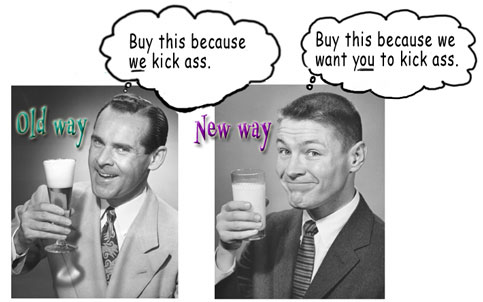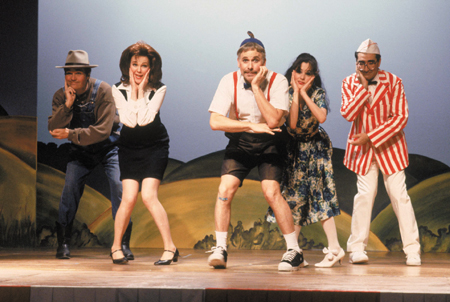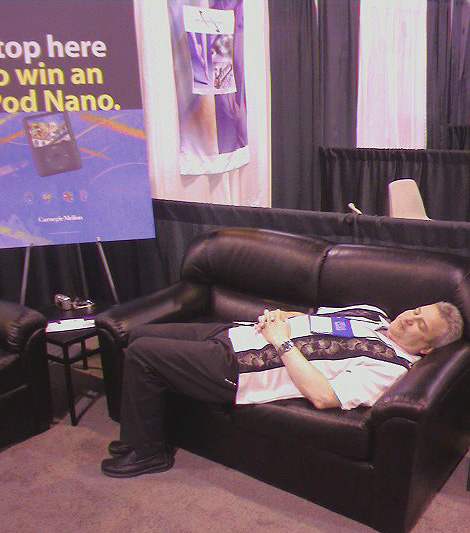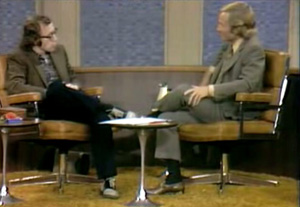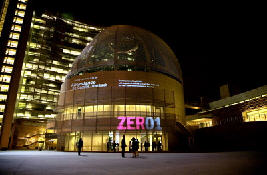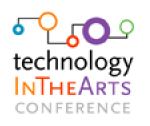It's been almost a week since the kick-off of the 2008 Technology in the Arts Conference, and we have been busy:
- Gathering feedback from our attendees on how we did this year. Emails were sent out with links to our post-conference survey. Please take a few minutes and let us know what you thought of the conference.
- Putting together content from the conference for the blog. Our next podcast installment, loaded with interviews and insights from conference attendees and presenters, will be posted on Friday.
- Traveling to a fair number of other arts conferences ourselves in the days following Technology in the Arts (blog posts on these conferences will be coming soon).
In the meantime, we'd like to take this opportunity to recognize and congratulate the winners of the 2008 ArtsTech Awards.
Dan Trueman - 2008 ArtsTech Award for Artists Dan Trueman's approach to working with technology reflects both a sensitivity to the native artistic capabilities of new technologies and a fierce drive to invent and reinvent that technology as needed. The Princeton Laptop Orchestra, for instance, relies on an unusual hemispherical speaker, designed by Trueman, that emulates the way acoustic instruments fill rooms with sound. These speakers profoundly affect not only the sound that is generated, but also the social context within which the performers play; this is a fundamental reimagination of how we as listeners, performers, and composers might live with electronic sound. His work seeks to preserve and transform traditional ways of making music - living-room jam sessions, chamber music rehearsals, orchestral performances - reflecting a belief that these are crucial and powerful ways that music lives within our culture.
Minnesota Shubert Performing Arts and Education Center - 2008 ArtsTech Award for Arts Organizations Six years ago, in the initial phases of its development, the Minnesota Shubert Performing Arts and Education Center determined that a key piece of its mission would be to provide high-quality, accessible arts education resources through the use of technology prior to opening (scheduled for 2010). Their adapted/reinvented use of Internet videoconferencing technology to teach arts education - specifically dance education - to public school children enables artists at the Center to connect with K-12 classrooms throughout Minnesota and beyond. Now social studies classes are studying swing dancing and dance marathons as a way of understanding the depression era while physical education students learn about the history and culture of hip hop dancing while getting a great work out.
TechSoup Global - 2008 ArtsTech Awards for Benefactors Founded in 1987 as CompuMentor, TechSoup Global is one of the most comprehensive nonprofit technology assistance providers in the world. In addition to providing educational resources and a vibrant online community, TechSoup Global provides nonprofit organizations with donations of the latest software and refurbished Green hardware for free with an administrative fee as little as 5% of retail cost. Since its founding, TechSoup Global has donated to 13,248 arts organizations from around the world, providing a total technology savings to the arts community of over 100 million dollars.
Congratulations also go out to our Rock Band 2 rock-off contest winners. These folks kicked it with a tasty groove during our afternoon energizers.
- Gregg Johnson - Young Audiences Woodruff Art Center
- Adrienne Lloyd - Tafelmusik Baroque Orchestra and Chamber Choir
- Michael Moss - National Black Arts Festival
- Sara Schnadt - Chicago Artist Resource
And, thank you to all of our conference attendees, presenters, and sponsors who helped make this year's conference possible.







